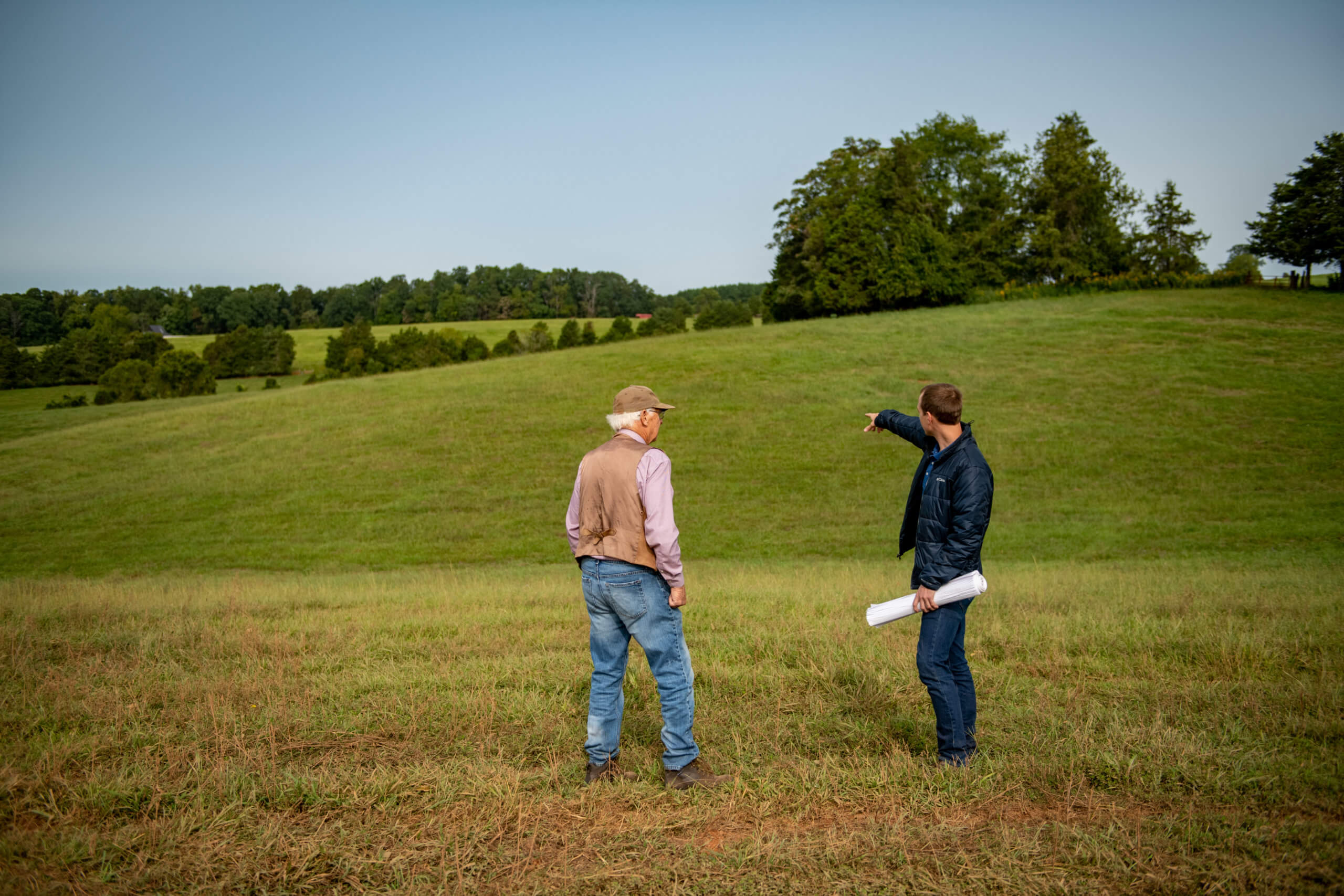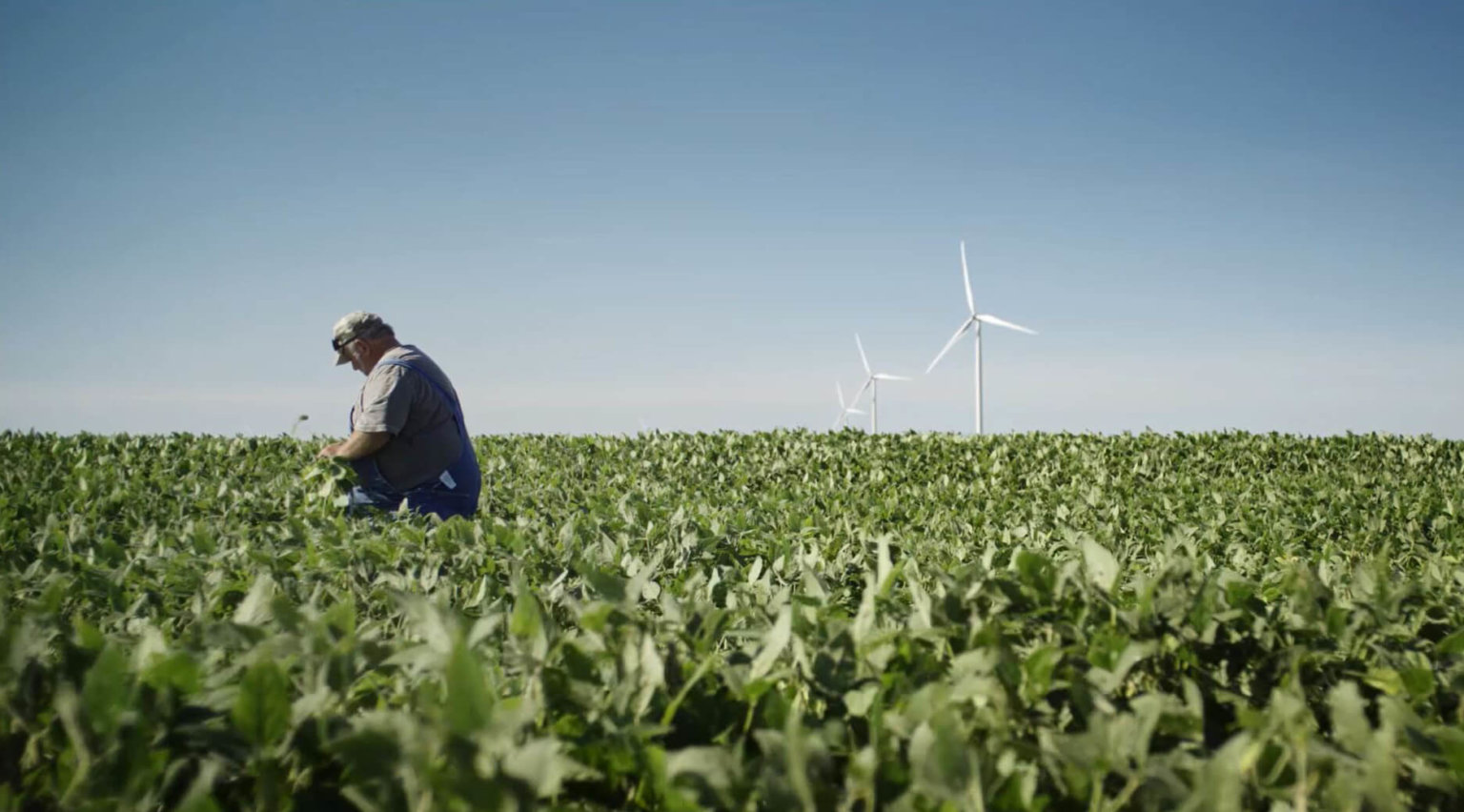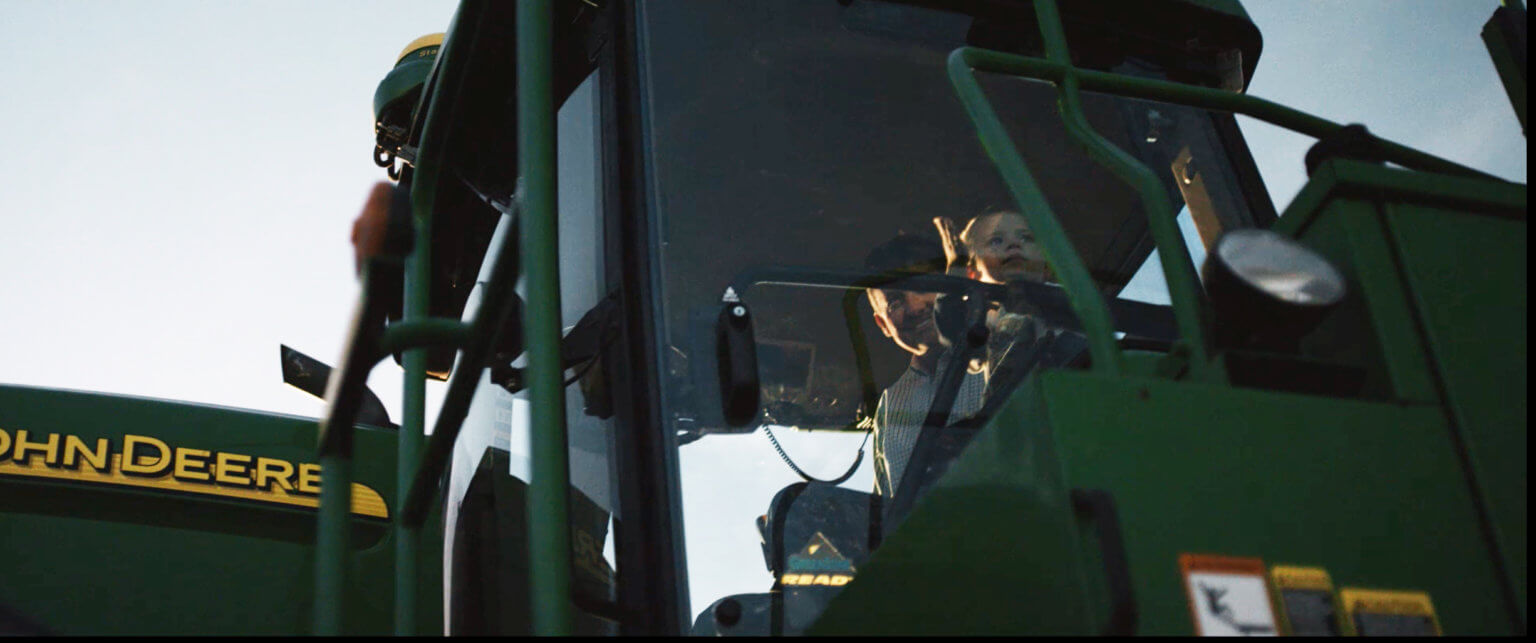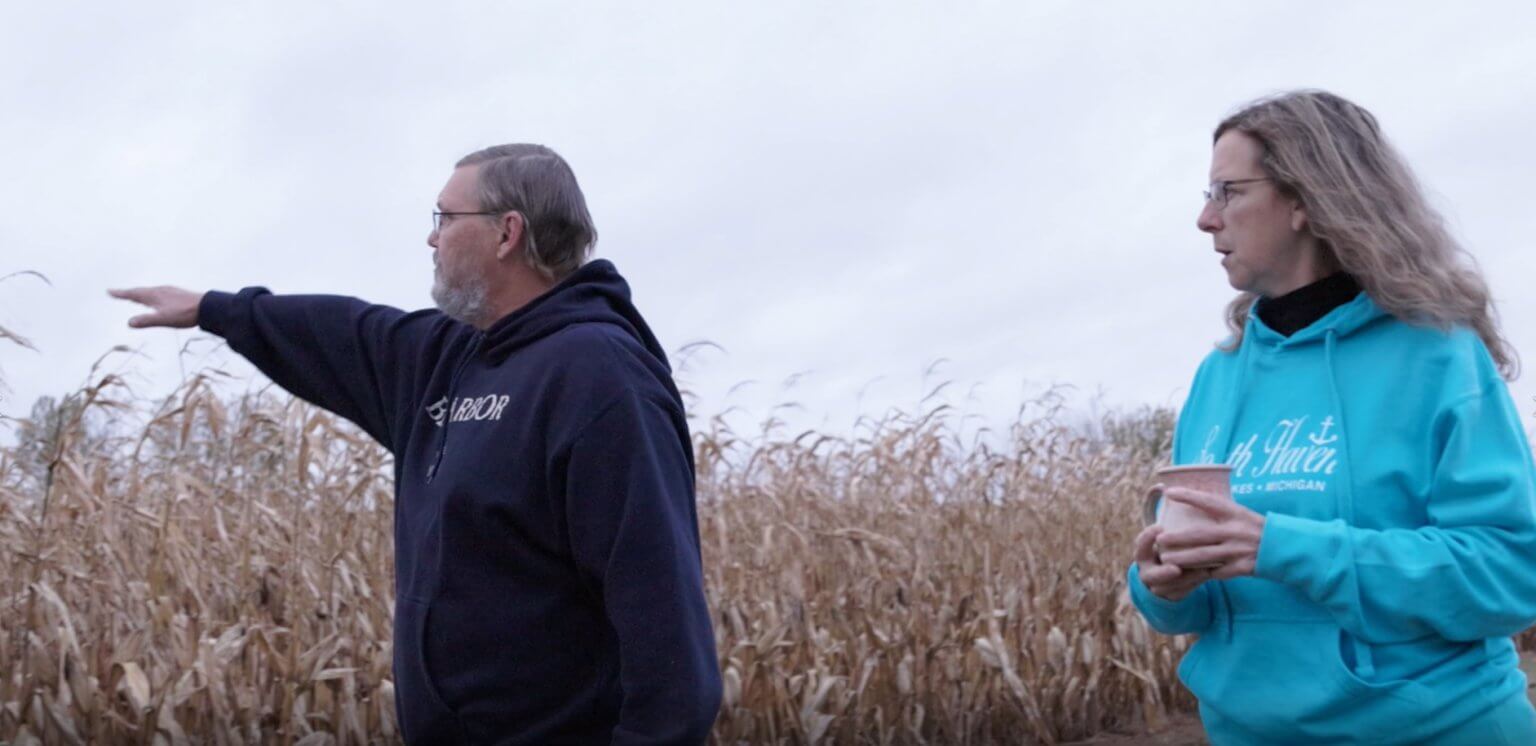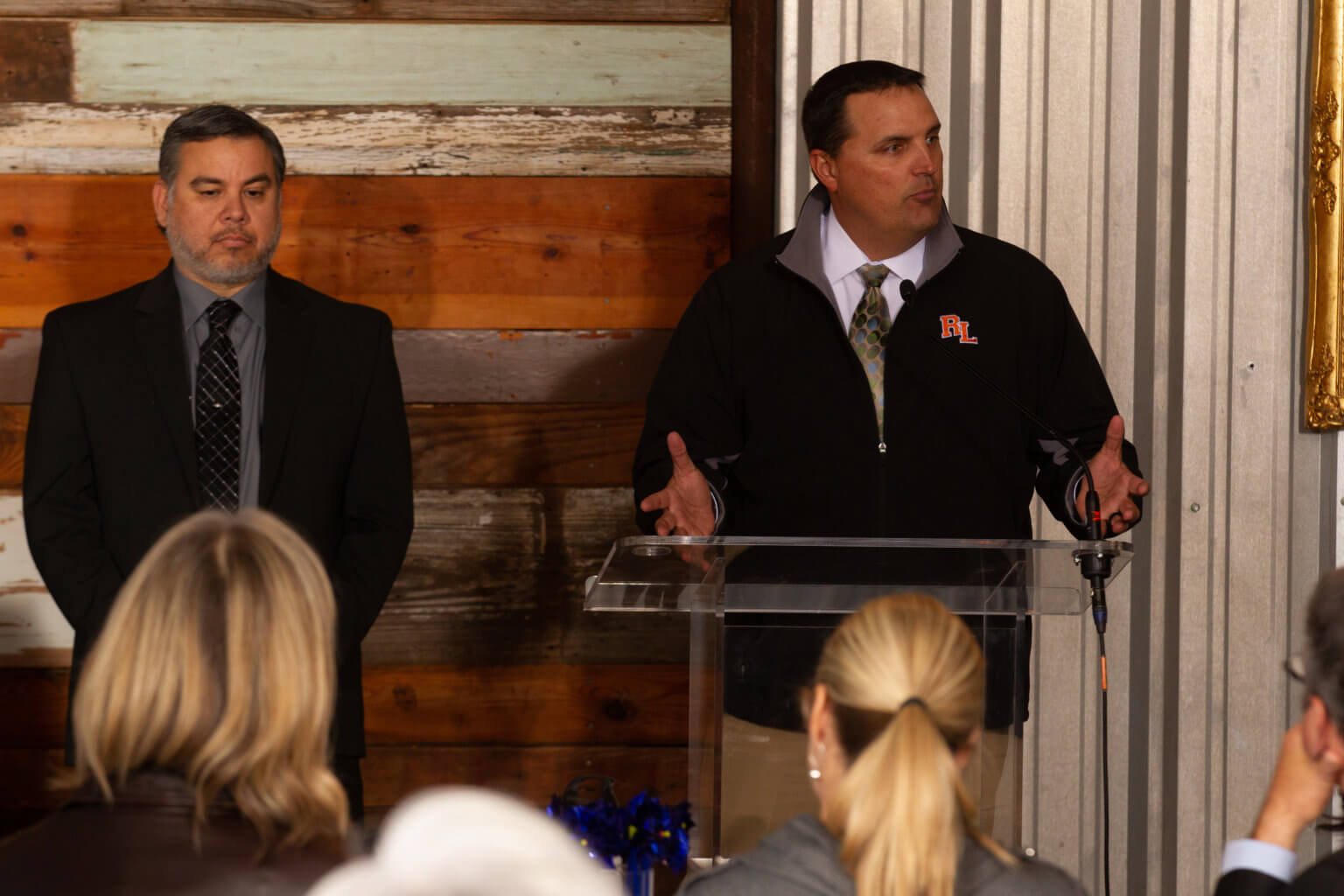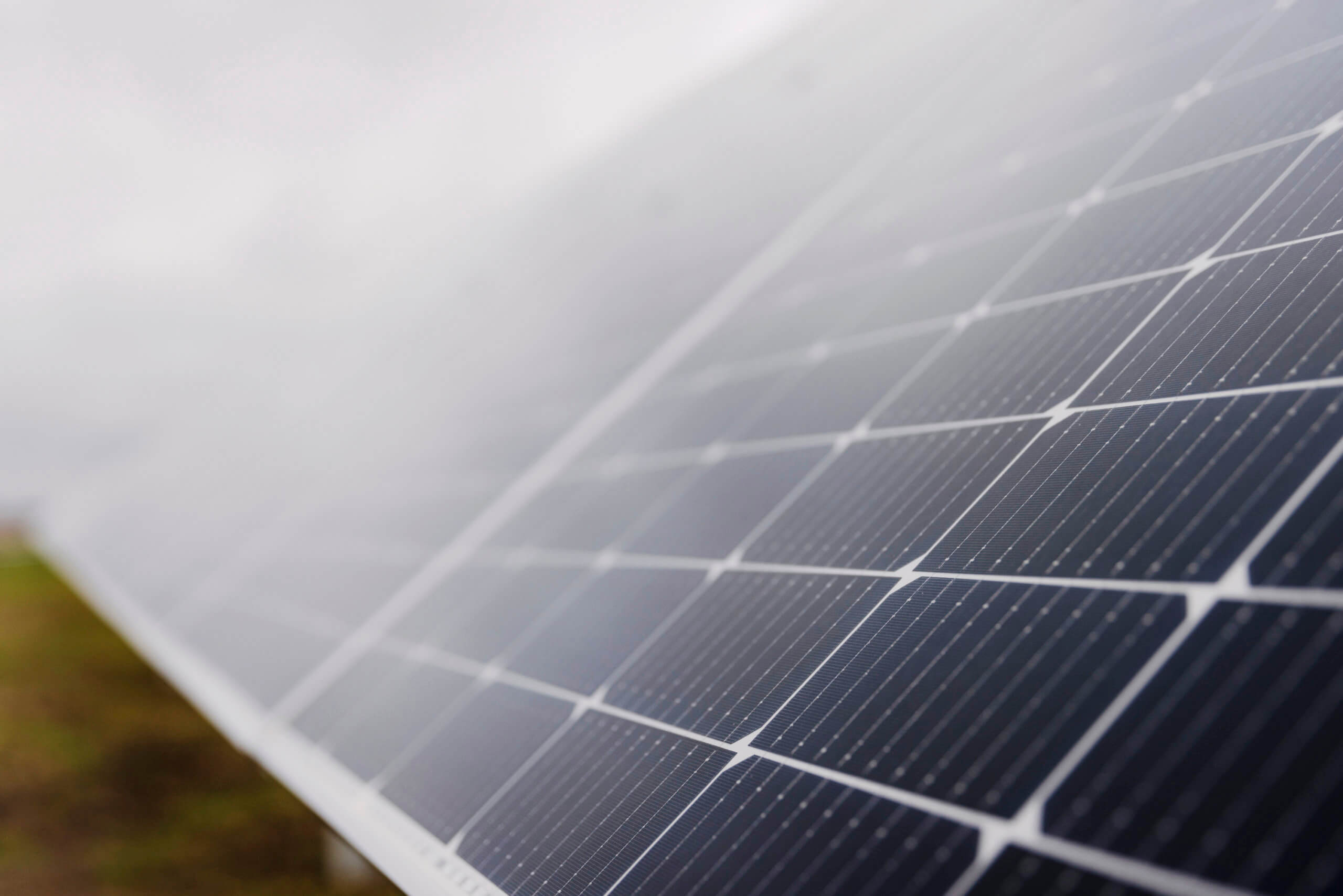Landowner Resources
Apex Clean Energy is an American company harvesting the wind and the sun with the help of farmers, landowners, and communities across the country.
Why work with Apex?
Why work with Apex?
We are a values-driven company.
Apex lives by its five core values of Safety, Professionalism, Integrity, Entrepreneurship, and Sustainability, and we integrate this commitment into everything we do. Whether through our deep relationships with project communities, the innovative Apex Conservation Grant Program, or our ability to adapt our projects to complement the community’s vision, we ground our work in staying true to these core principles. We are built to ensure that our community partners feel involved and informed throughout the leasing, permitting, construction, and operation of their projects, and we place great value in going above and beyond what is required to make sure we are meeting community needs at all times.
We work with you.
Apex has the most dedicated and well-resourced public engagement team in the clean energy industry. This means we have the time and the people to build relationships with landowners, local officials, and community members that are personal and responsive—not just transactional. It also means we invest in community needs, whether through our Community Grant Program, which has funded more than $4 million in community-driven projects across the country; unique local investments like community broadband; or a novel community benefits agreement.
We are constantly looking for ways to ensure that the projects we build create value for the entire community. With this in mind, we’ve implemented innovative lease structures, customized profit-sharing opportunities, and community-driven design processes throughout our portfolio. Our core value of entrepreneurship keeps us nimble and creative, and we are driven to think creatively about how our projects can support the communities that host them.
We’re in it for the long haul.
Apex has the capability to develop, construct, own, and operate our clean energy projects, so in most cases, our company will be with you throughout the entire project life cycle. We build long-term relationships knowing that the time and energy we invest today will continue to pay dividends throughout our decades of partnership.
We know clean energy.
Apex’s growing staff of energy professionals possesses expertise in everything from geographic information systems and land administration to environmental permitting and transmission planning and policy. You can feel confident that the people working on your project are deeply invested in ensuring it meets the highest standards of quality and excellence. Furthermore, this allows us to fully integrate our expert workforce, leading to more creative problem solving, deeper levels of understanding, and the ability to be highly responsive to changing needs on the ground.
We don’t quit when things get tough.
Thanks to our highly integrated expert team, Apex has demonstrated a unique ability to find success in some of the most challenging environments in America. Some of our competitors say we’re “scrappy,” but we say we know what it takes to build renewable energy projects under difficult circumstances. It takes creativity, commitment, values, and grit. It takes deep, trusting partnerships, a track record of honesty and integrity, and the will to never give up. Any infrastructure builder will tell you it is getting harder and harder every day to get projects done. We are up to the challenge and our portfolio proves it.
Meet Our Partners
No project is possible without the support of the landowners and communities that host renewable energy facilities. Hear firsthand from those who have been through the process.
New York, Nebraska, and more
Hear from officials, in their own words, from seven towns across the country as they highlight how the hard work of considering and ultimately approving the development of a wind farm is yielding the benefits promised from day one.
Local Elected Officials
Projects: Various
A Standard Project Timeline
Community Outreach
Open houses, public meetings, and other events will be held to introduce you to Apex team members and inform all residents and officials about project plans. A local Apex office may also be opened for drop-in visits. Apex team members will seek to answer all community questions about the project and what it will mean for local residents.
Development (2+ years)

Land Leasing
Apex representatives will meet with local landowners to determine whether they would be interested in leasing land for the project or its components. The leasing process can take months or even years.
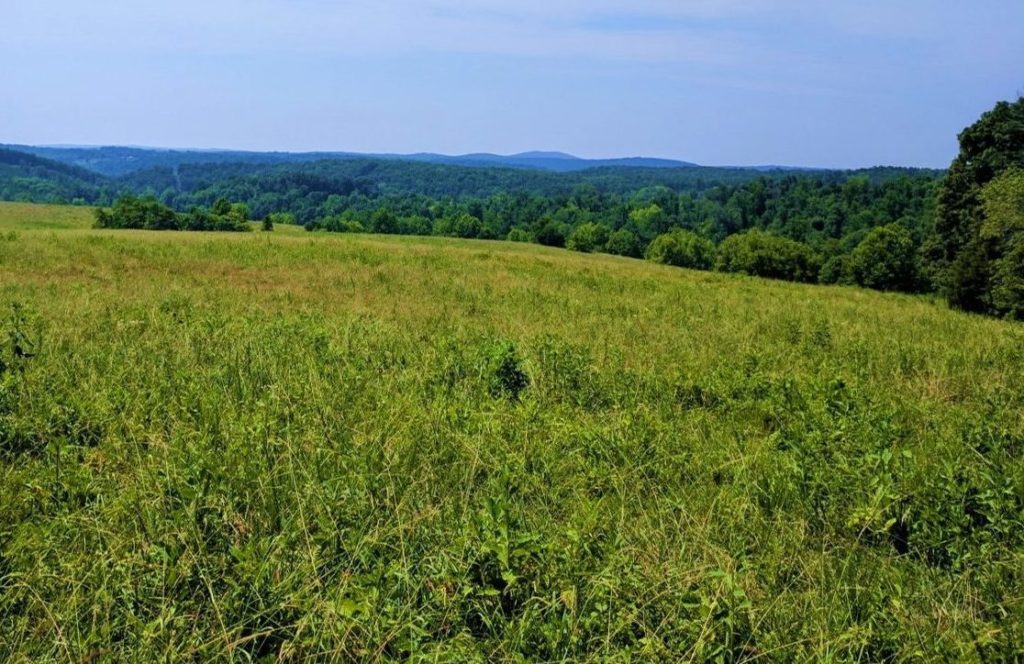
Studies
Apex will coordinate with federal and state agencies to study the presence of wildlife and ensure the project is sited to eliminate or minimize any adverse impact. During this time, a variety of additional studies will also be conducted. These studies may include ongoing analysis of the wind and/or solar resource, cultural resources, soil and geotechnical conditions, beam paths and radar, stormwater conditions, and airspace interactions.
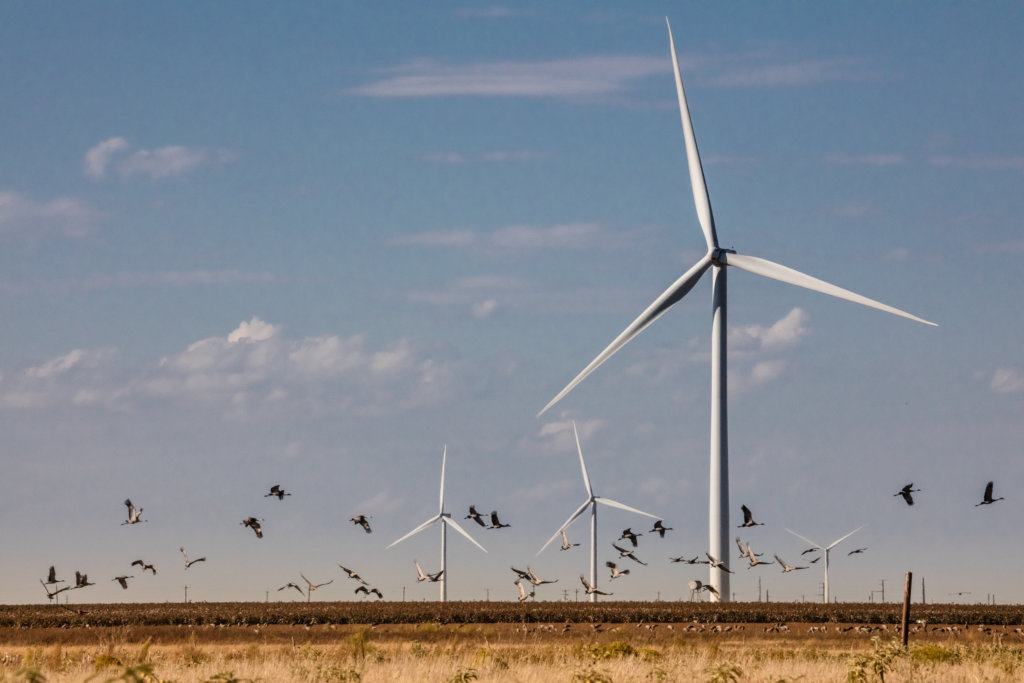
Design
As we complete our land leasing efforts, collect final study results, and come closer to selecting the specific model of the technology that will be most efficient at a particular project, we hone our plans for the project’s layout. Most project layouts are modified multiple times before being finalized.
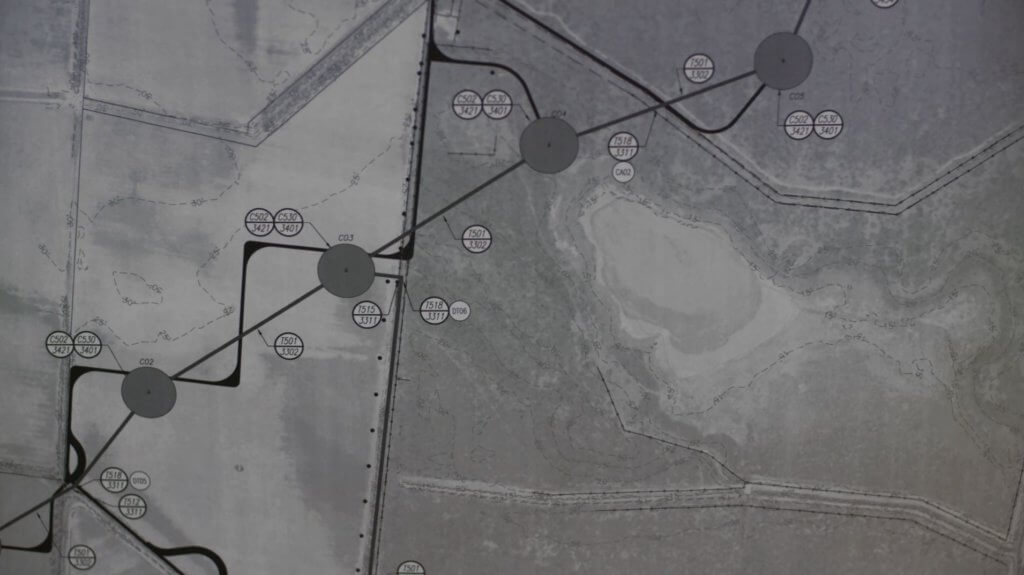
Permitting
Laws vary by state, county, and locality, but in most places, Apex is required to secure local permits and approvals to build a wind or solar energy facility. These may include construction permits, special use permits, road use agreements, floodplain permits, state siting permits, and others.
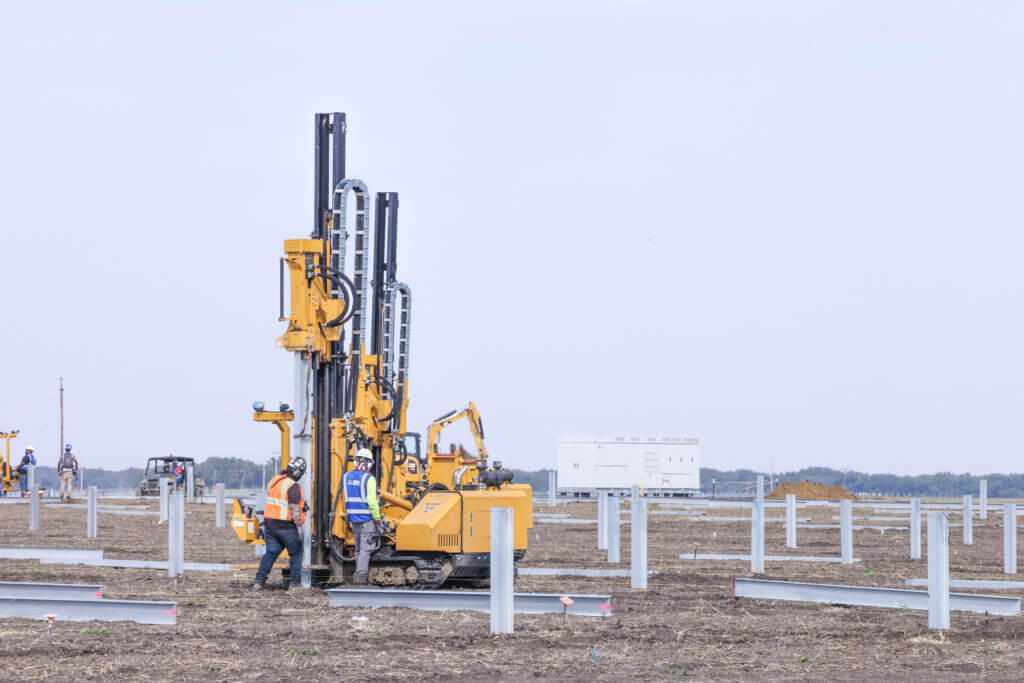
Roads
Access roads are constructed and local road improvements are made before project components arrive, then are maintained and repaired as needed.
Construction (9 to 12 months)
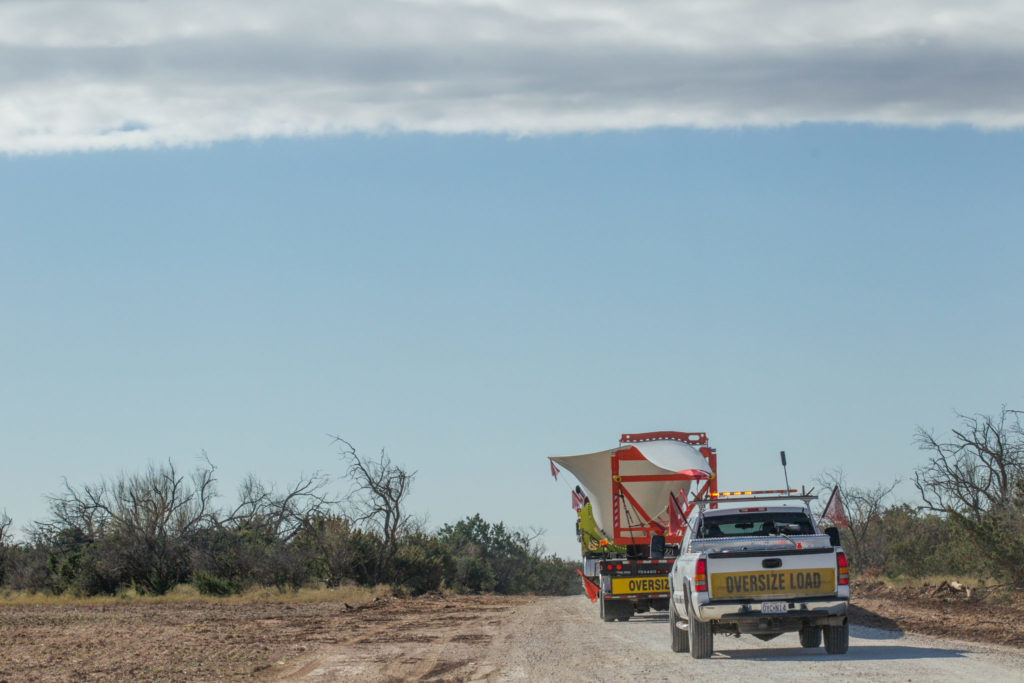
Foundations and Footers
Turbine foundations and solar module footers are excavated and assembled. Once complete, soil is restored to the site.
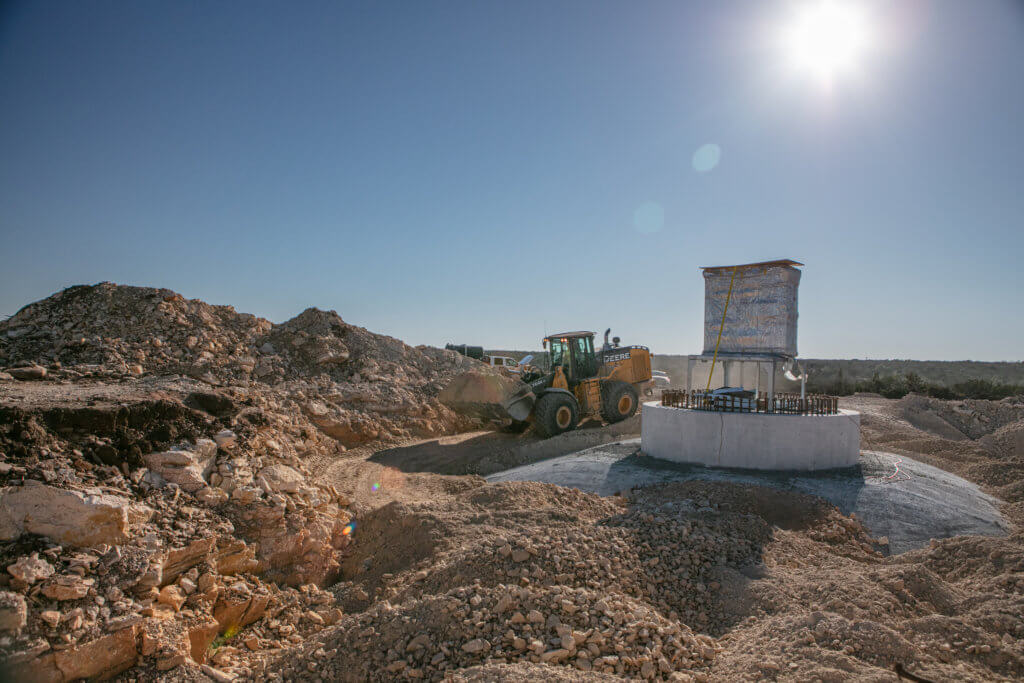
Turbine or Solar Module Components
Tower sections, nacelles, turbine blades, panels, and racking systems are staged nearby until they are ready to be installed.
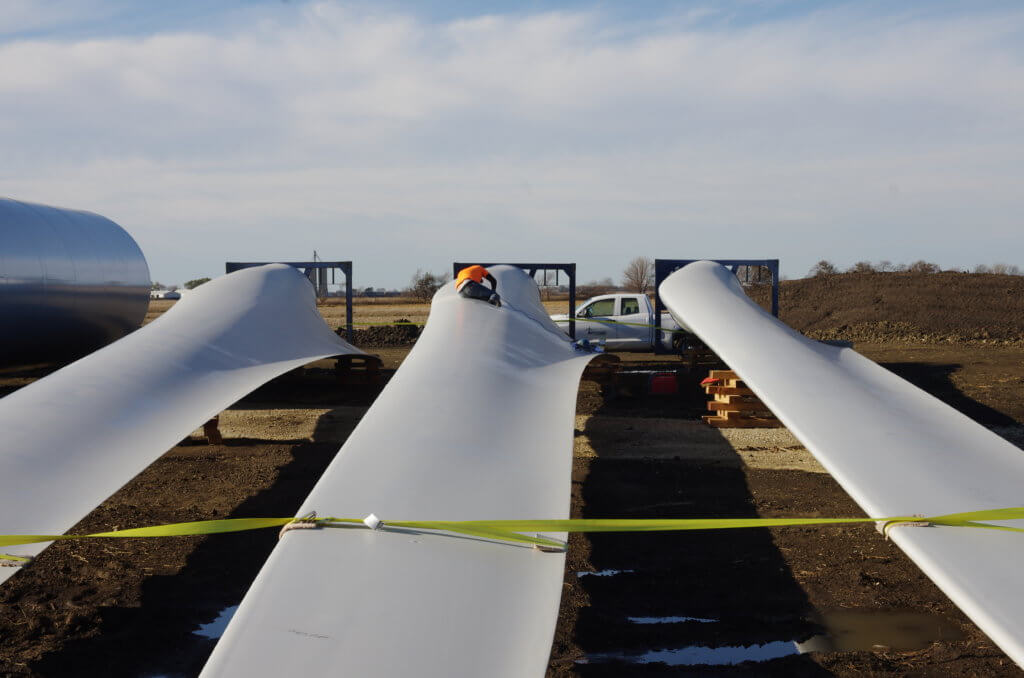
Grid Interconnection
Project electrical collection system and substation are routed for grid interconnection.
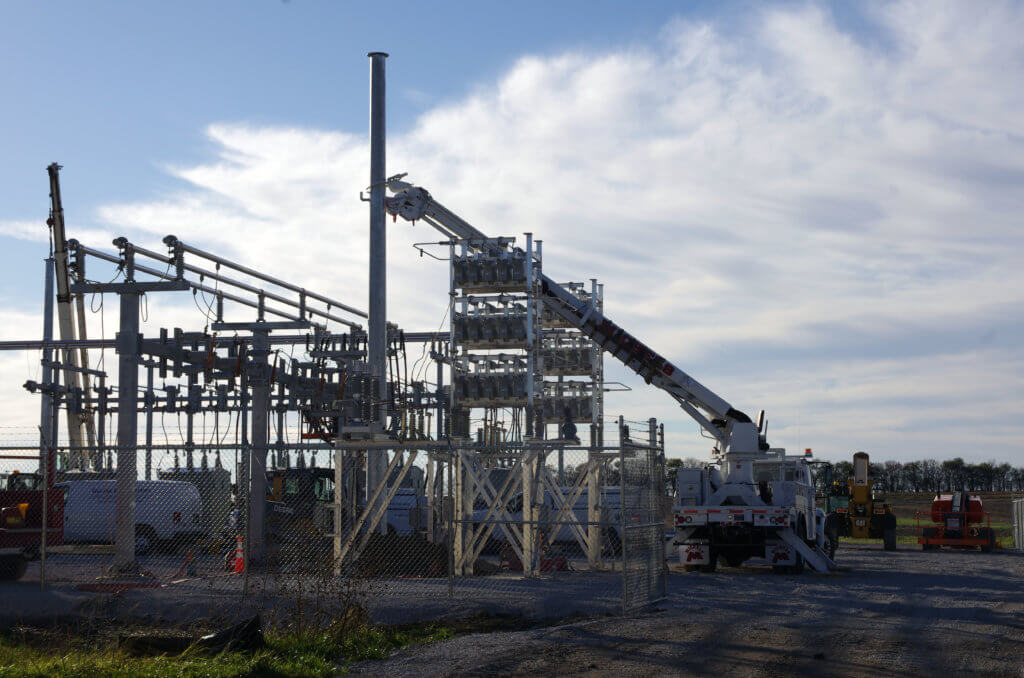
Turbine or Solar Array Assembly
In the case of wind energy, turbine cranes assemble turbine components on the site as crews inspect and commission each turbine. In the case of solar energy, racking systems are constructed and panels are installed with smaller machinery.
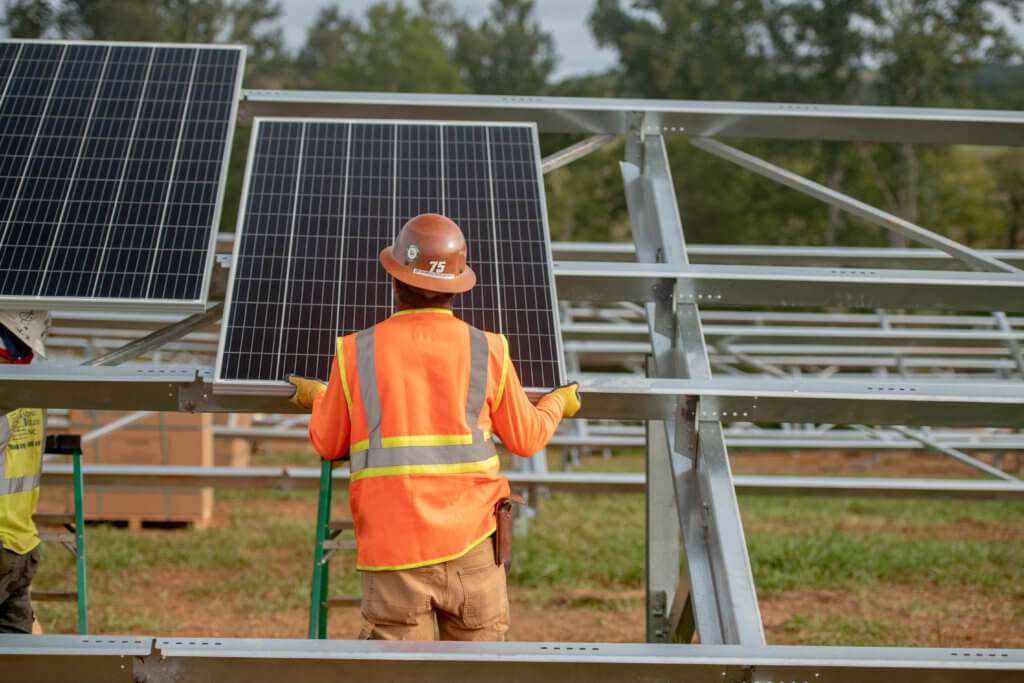
Restoration
Following completion of construction, the site is restored as much as possible to its pre-existing state. Soil stabilizing vegetation is planted inside the fence line on solar projects, and on wind projects, the ground surrounding all permanent structures is returned to its prior condition. Yes, that means topsoil and subsoil are separated at the beginning of construction and returned (in the correct order!) upon completion.
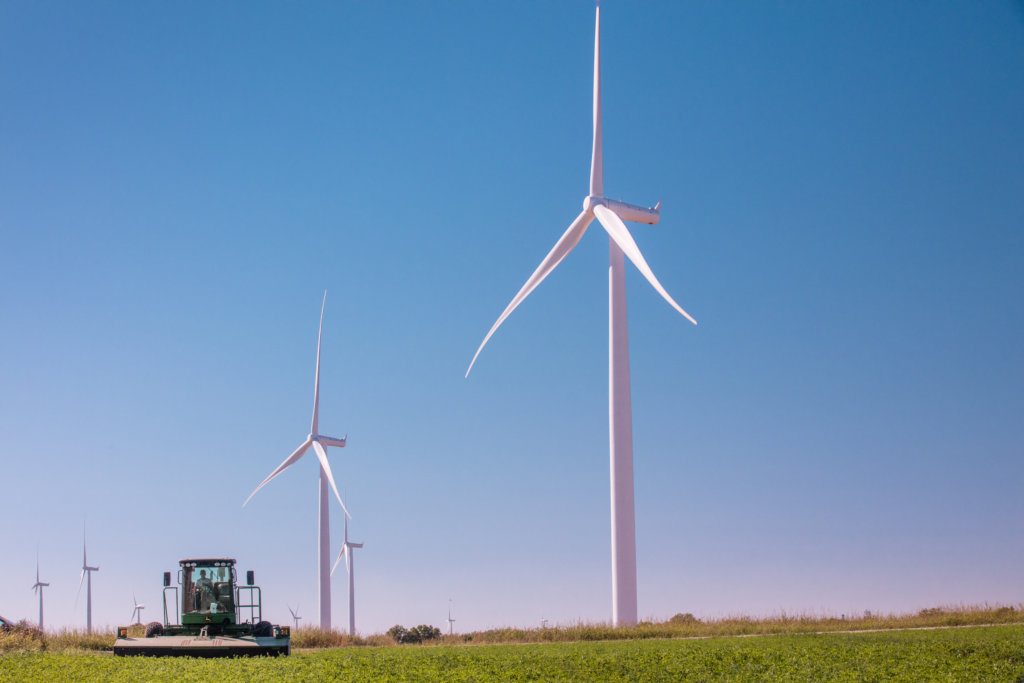
On-Site Maintenance
Once a project is operating, a crew of technicians will routinely conduct maintenance on the facility. Led by a facility manager, often based out of a local operations and maintenance building, these teams keep a close eye on the facility at all times to ensure that it functions efficiently and safely. Wind turbines and solar panels are routinely inspected to maintain appearance and efficiency of energy production. On the wind side of things, this is not a job for those who are afraid of heights!
Operations (25 to 30 years)
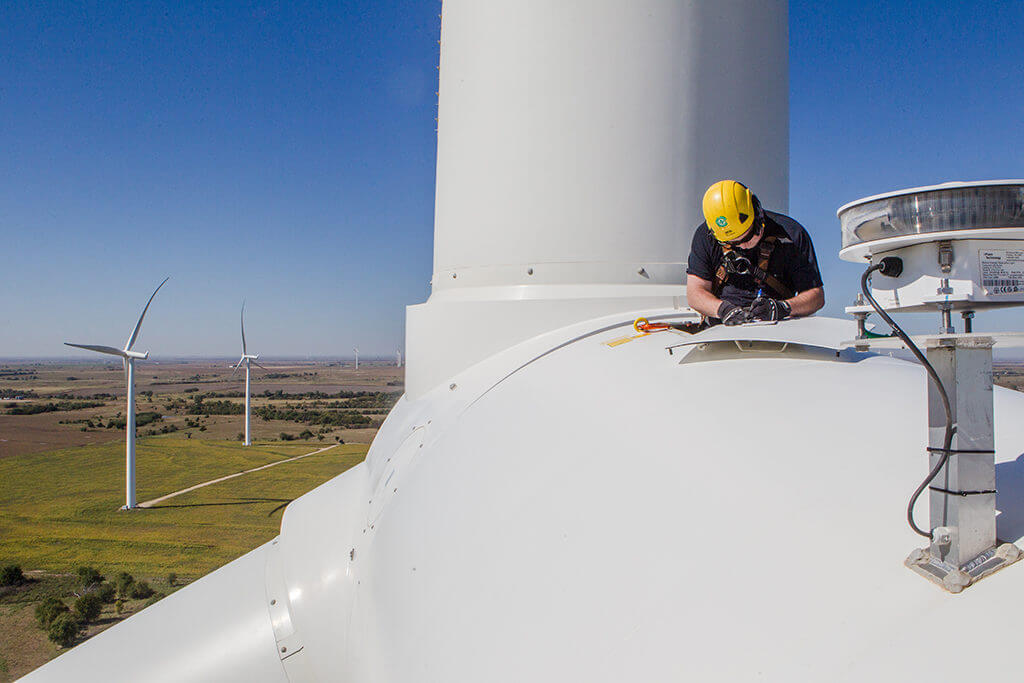
Remote Operations
Back at Apex’s headquarters in Charlottesville, a 24/7/365 remote operations team coordinates with the local crews to optimize generation, respond immediately to any mechanical issues, and manage integration with the local energy market.
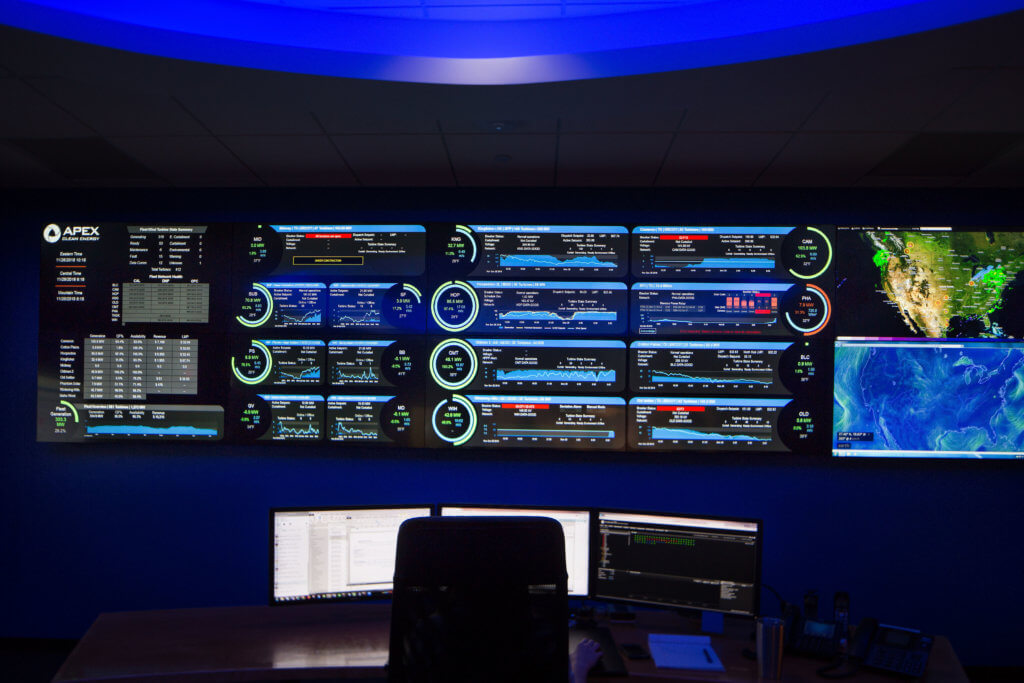
Clean Energy FAQs
We’re sure you have questions about whether clean energy is right for you and your community. Apex is committed to open, honest, and transparent communication with our partners, so let us know if you can’t find what you’re looking for.
How does leasing work?
Apex leases are designed to protect the rights of the private property owner while ensuring that the company has the legal right to build energy facilities on the property. The Apex lease outlines corporate commitments to the landowner, including payment and notification terms. The lease also outlines a landowner’s commitments to Apex, including an agreement to protect the wind resource and an acknowledgment that the landowner cannot sign a lease with another wind or solar energy company for the same parcel. We encourage landowners to read the lease document carefully and to seek legal counsel as part of their review.
Are landowner agreements confidential?
In order to make land leases legally binding, proof that the land has been leased must be filed with the local county clerk. Once filed, this information may be available to the public. However, in most cases, the terms of the lease agreements are proprietary and should remain confidential.
Will anything be placed on my property without my permission?
Project components will only be sited on private properties whose owners sign a lease agreement. All agreements are fully voluntary between landowners and the project.
Do renewable energy facilities affect property values?
Renewable energy facilities drive economic development by generating taxes and other revenues for local communities. These funds generally flow to counties and local governments, local schools, emergency services, health care services, and public safety facilities. It is well known that quality school districts and local services boost property values, and it therefore follows that wind and solar farms can positively affect nearby property values over time.
A major study released in 2013 on wind farms and property values by Lawrence Berkeley National Laboratory analyzed more than 50,000 home sales near 67 wind facilities in 27 counties across nine U.S. states. The study concluded that there was no evidence of adverse impacts to nearby home property values from wind energy facilities.
In addition, a 2015 report from the University of North Carolina examined the economic impact of more than 100 solar projects in over 50 counties, finding that solar facilities have increased the tax revenue from agricultural property by between 1,000% and 10,000%.
Will wind farm sound affect the local community?
Modern wind turbines do produce some audible and inaudible sound, but this sound is emitted at levels so low that it should not impact nearby residents in any way. The sound produced by properly functioning turbines comes from the motion of their blades cutting through the air, not the mechanical components of the turbine generator box. Evidence demonstrates that when turbines are sited according to Apex’s internal standards, the audible sound they generate is no louder than a refrigerator, and the low-frequency sound, sometimes called “infrasound,” they produce is similar in intensity to that generated by waves crashing on the beach. Ample scientific evidence confirms that none of this sound is dangerous. In fact, despite decades of study, there is no evidence to show that turbines have any adverse impacts on health at all.
What is shadow flicker?
“Shadow flicker” refers to the shadows cast by wind turbine blades as they rotate in front of the sun, similar to the shadow cast by a tree blowing in the wind. Very few homes in a project will experience shadowing; for those that do, shadowing can only occur during certain, specific times of year and for no more than a few minutes per day, on average. During cloudy days, shadow flicker does not occur. If this level of shadowing is still problematic for an individual residence, the project will work with that resident to minimize or eliminate the shadowing effects.
While some worry that even minimal flicker can cause seizures in photosensitive individuals, Epilepsy Foundation research shows that the rate at which wind turbine shadows “flicker” is far below that associated with seizures.
Are wind farms harmful to birds?
It is possible to design wind energy facilities that minimize avian impacts, and Apex works hard to do so through responsible siting. Our team of in-house and consulting wildlife biologists thoroughly study every Apex project before construction to ensure that migration routes and sensitive habitat is avoided. We work in close consultation with federal and state environmental agencies and use appropriate conservation measures to ensure that our wind projects have no significant effects on bird or bat populations.
Despite claims to the contrary, wind energy projects are far from the most dangerous human-caused threat to birds. Buildings, cars, power lines, and radio and cell phone towers cause far more losses than wind turbines. Housecats kill 2.4 billion birds a year alone.
What protections exist to ensure that wind and solar farms are not abandoned by their owners?
The largest expense associated with a renewable energy facility is its construction. Once a facility is operating, it becomes a profit generator, because it makes far more money selling the electricity it generates than it costs to maintain. Because operating wind and solar farms provide this benefit to their owners, they represent valuable assets. If something were to happen to prevent a project owner from maintaining ownership, there would always be a group of new owners eager to purchase the asset. Because of their inherent value, we can be confident that operating facilities will not be abandoned.
However, as added protection for local communities, most wind and solar farms do enter decommissioning agreements with their landowners and/or local county governments. Though these agreements vary in specifics, they lay out terms for exactly how a facility will be deconstructed and removed from the site at the end of its serviceable life (about 30 years.) They often specify the depth to which components will be removed from the ground, how the land will be restored for agricultural production, and how the community will be protected from any costs associated with this remediation. In many cases, the facility owner is required to secure a bond to guarantee that the funds to decommission the project are available if and when such action is required.
Can solar farms create stormwater or drainage issues?
Properly designed solar projects will maintain, and in some cases can even reduce and improve existing agricultural runoff thanks to permanent groundcover with deeper root systems that increase water retention and organic matter content in previously farmed soils.
Stormwater and runoff management is regulated at the federal, state, and local level. Each state has different methods for regulating how construction and infrastructure projects are permitted with regards to stormwater, but most states do require some form of stormwater management permit through which they assess anticipated impacts to runoff and/or erosion and evaluate proposed mitigation strategies. These laws exist to ensure that no sediment or excess volume is allowed to flow into nearby waterways due to the new facility, and that no excess water is allowed to flow onto neighboring properties.
Apex Clean Energy complies with all federal, state, and local laws, including those related to stormwater and runoff management. Before a project enters construction, a licensed, third-party, civil engineer is hired to complete a full analysis of the project’s anticipated impacts to water flow. The analysis includes consideration of the hydrology and topography of the project site and the specifics of the project’s design and proposes a set of best practice management techniques to ensure runoff from the project does not impact neighbors, existing infrastructure, or waterways. Construction of these projects does not begin until the required stormwater permits have been approved. These permits require the project to prevent any erosion and runoff throughout its life.
Are solar farms harmful to wildlife?
Studies show that in addition to helping displace harmful emissions produced by fossil fuel generation, photovoltaic solar energy facilities can improve biodiversity and benefit wildlife by improving habitat in their immediate vicinity. With proper planning, solar farms can improve the environment and enhance local ecological services by naturalizing areas around solar facilities, improving wildlife habitat, increasing pollination, improving water cycling, increasing erosion control, and even helping threatened species. Solar farms can also help create new habitat, providing pollinator-friendly ecosystems and high-quality hunting and foraging habitat for birds.
Although solar panels may modify wildlife habitat in the project’s immediate footprint, evidence suggests that these changes are balanced by other habitat-based benefits, and there is currently no evidence to support a conclusion that solar farms have an adverse impact on wildlife’s use of the land surrounding the project.
What happens to solar panels at the end of their life?
At the end of a solar facility’s useful life, estimated to be about 30 years on average, panels can be removed and recycled. Recycling programs are being developed that are expected to recover about 90% of the materials used in the panels, much of which is glass. In fact, the International Renewable Energy Agency projects that the value of recovered materials could exceed $15 billion by 2050 and that the material recovered could be used to remanufacture two billion solar panels. The solar industry is actively developing new systems and protocols in anticipation of the future retirement of solar panels. These efforts include establishing uniform, cost-effective recycling practices (e.g., identifying vendors and service providers, aggregating end-of-life solar components, and streamlining and improving recycling processes).
More Resources
Fact Sheets
Interactives
Take a virtual tour of the Apex-developed Isabella Wind farm in Michigan. This unique comparative simulation shows the project as it was constructed and an alternative layout of how the project might have looked if designed using larger, higher-capacity wind turbines being produced today.
Careful siting of our turbines is part of what helps Apex accelerate the shift to clean energy, responsibly. This interactive map of Isabella Wind shows how setbacks from certain infrastructure and natural features can transform a seemingly wide-open area into a complex patchwork of smaller open spaces where turbines may be appropriately sited.
Engage with Apex Clean Energy
Subscribe to our newsletter for regular updates and news about Apex and the energy transition.
